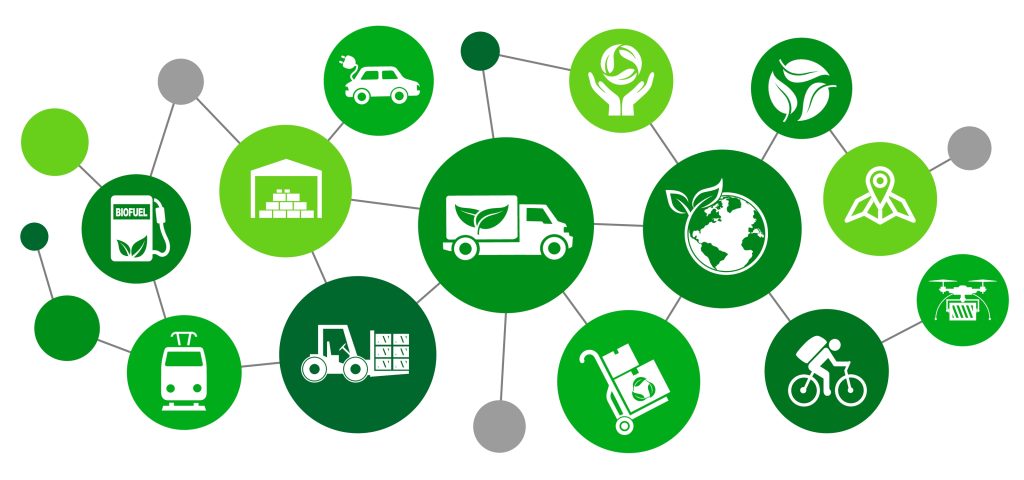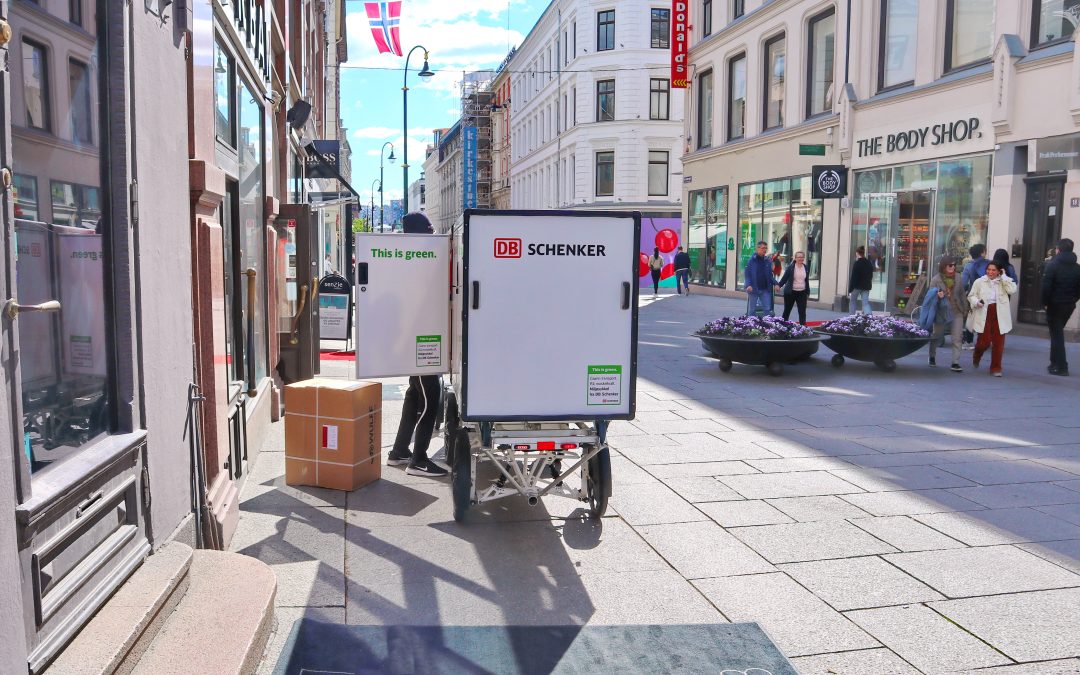Photo caption: DB Schenker Electric Delivery Cargo Bike in the pedestrian zone of Oslo’s city center.
Authors: Ade O. Fajemisin, David Rey and Xavier Brusset – SKEMA Business School
Introduction
Imagine living in a big city where delivery trucks constantly drive around, dropping off packages from online orders. While this makes shopping convenient, it also leads to more traffic, pollution, and higher delivery costs.
To tackle these issues, researchers have created a new way to coordinate delivery services to be more eco-friendly. This new approach involves using two levels, or “echelons,” of delivery to reduce carbon emissions and make deliveries more efficient.
Let’s break down how this system works and the proposed solution.
Problem Statement
High carbon emissions from delivery trucks driving around cities are a major issue. The traditional delivery system involves large trucks picking up packages from warehouses outside the city and delivering them directly to customers. This method increases traffic congestion and pollution, especially in busy city centers.
To address this, cities are moving towards a two-level delivery system.
In the first level, called the First-Mile (FM), trucks transport packages from warehouses to smaller hubs on the outskirts of the city.
In the second level, known as the Last-Mile (LM), smaller, greener vehicles like electric bikes or low-emission vans pick up the packages from these hubs and deliver them to customers. This system aims to reduce the number of large trucks in city centers and lower overall emissions.
However, coordinating these two levels efficiently is challenging, as it involves multiple delivery service providers (DSPs) with different priorities.
Proposed Solution
The researchers propose a new model using a game theory approach called bilevel optimization to better coordinate these two echelons of delivery. Here’s how it works:
1. Single-Leader Multi-Follower Game
Think of a game where a green logistic service platform (the leader) makes a move, and the other players (the followers) respond based on that move. In this context, the leader is a central authority (like a city’s logistics manager) who, through this green logistic service platform, assigns packages to different hubs and smaller delivery providers.
The followers are the various logistic service providers (FM) who have parcels to deliver to customers in the cities and the last mile delivery service providers (LM) who aim to minimize their costs and meet delivery time windows while following the leader’s assignments.
2. Optimization Goals
The green logistic platform’s goal is to minimise total carbon emissions from both the logistic service providers (FM) and the last mile delivery stages (LM) while ensuring efficient package delivery. The FM providers aim to reduce their transportation costs when moving packages from warehouses to hubs. The LM providers focus on minimizing costs and ensuring timely deliveries from hubs to customers.
3. Methods
Two methods are proposed in this article:
- Exact Cutting-Plane Algorithm: This method precisely finds the best strategy for the leader by considering all possible responses from the followers.
- Data-Driven Heuristic Approach: Since the exact method can be complex and time-consuming, a quicker, data-driven approach is used. This method approximates the best responses from the followers using predictive models, making it suitable for large-scale city operations.
4. Testing and Results
The researchers tested their models using realistic data from cities like Madrid and Berlin. The findings showed that this coordinated delivery model could significantly reduce emissions while also respecting the preferences of the different DSPs, such as on-time deliveries. The data-driven method was especially effective, providing efficient solutions in a competitive timeframe.
Conclusion
In summary, the study proposes a new way to manage urban deliveries that balances the need for quick, cost-effective service with the goal of reducing carbon emissions. By coordinating FM and LM delivery providers through a central authority using advanced optimization techniques, cities can achieve greener logistics. This approach not only helps the environment but also ensures that all delivery providers can operate efficiently and meet customer demands.
This article presents the key points of an academic paper written by Ade O. Fajemisin, David Rey and Xavier Brusset in the scope of the URBANE project. Full paper available here.

